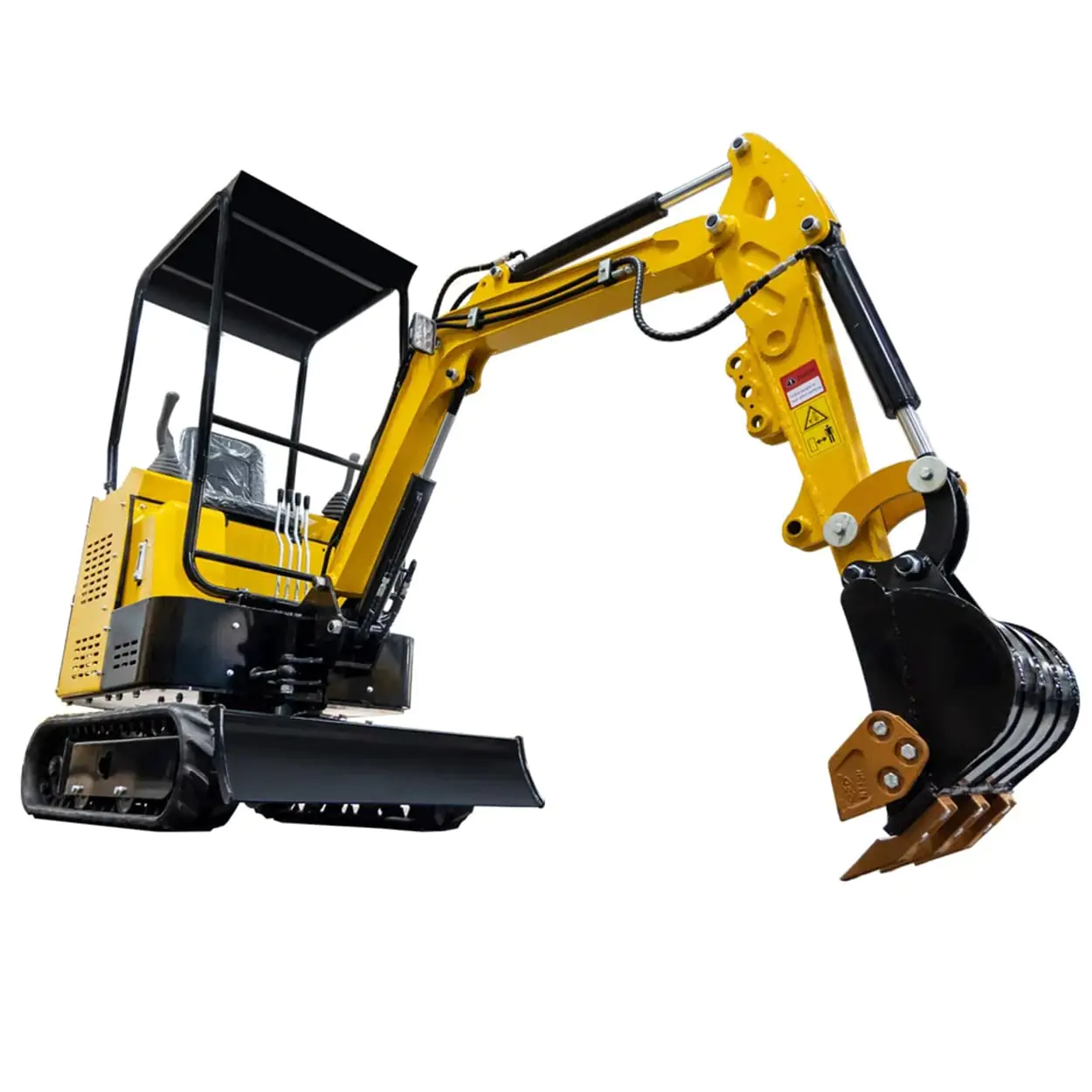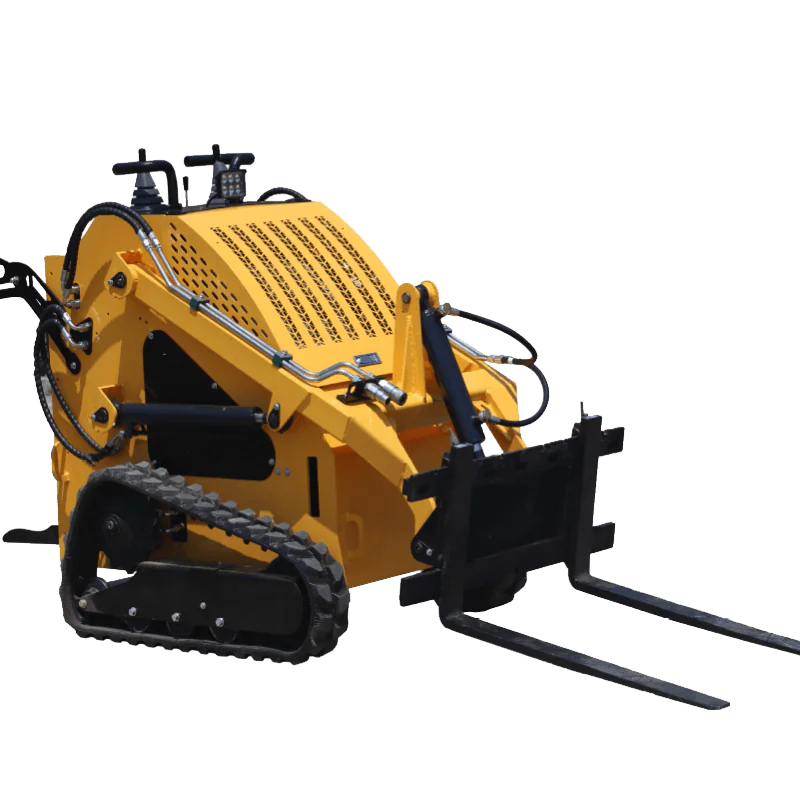Loading a mini excavator onto a trailer might seem daunting, but with the right guidance, it becomes a straightforward task. This comprehensive guide will walk you through the necessary steps and safety procedures to ensure your equipment is securely transported without a hitch.
Understanding Your Mini Excavator and Trailer
Before you begin, it’s crucial to know the dimensions and weight of your mini excavator. This information ensures that your trailer can handle the weight capacity and that you comply with transportation regulations.
- Mini Excavator Weight: Check the manufacturer’s specifications.
- Trailer Capacity: Ensure your trailer is rated for the excavator’s weight.
- Equipment Dimensions: Be aware of the width and height for clearance.
Why Is Proper Loading Important?
Improper loading of heavy equipment like a mini excavator can lead to accidents, damage to the machinery, or even legal issues. Securing the excavator correctly prevents it from shifting during transport, which can cause disastrous consequences on the road.
Selecting the Right Trailer
What type of trailer should you use? Opt for a trailer specifically designed for transporting heavy equipment. A car trailer might not suffice due to weight restrictions.
- Flatbed Trailers: Ideal for heavy machinery.
- Tilt Trailers: Eases the loading process.
- Loading Ramps: Necessary if the trailer doesn’t tilt.
Inspecting the Equipment and Trailer
Before loading, conduct a thorough inspection:
- Trailer Inspection:
- Check the wheels of the trailer.
- Inspect the hitch and coupling mechanisms.
- Ensure the trailer is level and stable.
- Mini Excavator Inspection:
- Verify the machine is in good working order.
- Check for any leaks or damages.

Preparing the Trailer for Loading
How do you prepare the trailer?
- Position the Trailer: Park on a flat, stable surface.
- Engage the Brakes: Use wheel chocks to prevent movement.
- Set Up Ramps or Tilt Mechanism: Ensure they are secure and can handle the excavator’s weight.
Loading the Mini Excavator Safely
Safety is paramount when loading heavy equipment.
- Align the Excavator: Position the mini excavator straight in front of the trailer.
- Drive Up Slowly: Ascend the loading ramps carefully.
- Use a Spotter: If possible, have someone guide you.
- Avoid Sudden Movements: Keep controls smooth to prevent tipping.
Securing the Mini Excavator
Once loaded, how do you secure the excavator?
- Lower Attachments: Bring the bucket or other attachments down to the trailer bed.
- Engage Locks: Use any locking mechanisms on the excavator.
- Use Tie-Downs:
- Chains and binders are recommended for heavy equipment.
- Attach to designated tie-down points on both the excavator and trailer.
- Tighten securely to prevent movement.
- Check All Connections: Ensure everything is fastened and locked.
Transporting the Mini Excavator
Before hitting the road:
- Double-Check Securements: Better safe than sorry.
- Plan Your Route: Avoid roads that may not support heavy loads.
- Drive Carefully: Accelerate and brake smoothly to prevent shifting.

Unloading the Mini Excavator
At your destination:
- Park on Level Ground.
- Set Up for Unloading: Ensure ramps are secure.
- Release Tie-Downs: Carefully remove all straps and chains.
- Drive Off Slowly: Descend ramps with caution.
Safety Procedures and Best Practices
- Wear Protective Gear: Helmets, gloves, and steel-toed boots.
- Stay Alert: Be aware of your surroundings.
- Follow Manufacturer Guidelines: Always consult the excavator’s manual.
Common Mistakes to Avoid
- Overloading the Trailer: Know the weight of the mini excavator and don’t exceed the trailer’s capacity.
- Improper Securing: Using inadequate straps or chains can lead to accidents.
- Ignoring Maintenance: Regularly inspect your equipment to avoid unexpected failures.
ALT
Frequently Asked Questions
Can I Use a Car Trailer to Transport a Mini Excavator?
While a car trailer might seem convenient, it’s typically not equipped to handle the weight and size of a mini excavator. It’s best to use a trailer designed for heavy machinery to ensure safety.
How Do I Secure the Mini Excavator’s Attachments?
Lower all attachments to the trailer bed and use additional tie-downs if necessary. This prevents movement that might cause damage during transport.
What Are the Legal Requirements for Transporting Heavy Equipment?
Requirements vary by location, but generally, you need to:
Secure the load properly.
Comply with weight restrictions.
Ensure your vehicle and trailer meet safety standards.
Consult local regulations before transporting heavy equipment.
Tips for Safe Transportation
- Plan Ahead: Know your route and any restrictions.
- Use Quality Equipment: Invest in high-quality chains, binders, and straps.
- Stay Educated: Keep up with the latest safety procedures and best practices.
Conclusion
Transporting a mini excavator doesn’t have to be a challenging task. By following proper loading procedures, securing the equipment, and adhering to safety guidelines, you can ensure your excavator reaches its destination without any issues.
For more information on reliable and efficient mini excavators, check out our 0.8 Ton Mini Excavator or explore our range of Mini Skid Steer Loaders.
Key Takeaways
- Always know the dimensions and weight of your mini excavator.
- Select the right trailer designed for heavy equipment.
- Follow proper safety procedures during loading and unloading.
- Securely fasten the excavator using appropriate chains and binders.
- Regularly inspect your equipment and trailer for maintenance.
By adhering to these guidelines, you’ll transport your mini excavator safely and efficiently every time.












